
Publisher:
Bonnie King
CONTACT:
Newsroom@Salem-news.com
Advertising:
Adsales@Salem-news.com

~Truth~
~Justice~
~Peace~
TJP
Apr-08-2011 23:58


 TweetFollow @OregonNews
TweetFollow @OregonNews
Cars, Planes and Trains
Tim King Salem-News.comWho did what first and why?
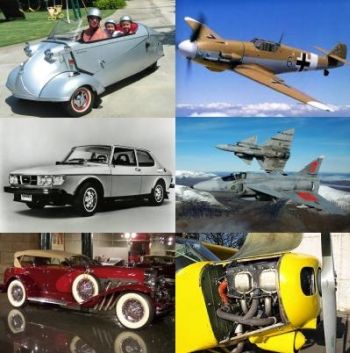 Photo credits: Digger History, autointhenews.com, image shack, autospectator.com, acig.org, damox.com |
(SALEM, Ore.) - Some of the finest cars on the road, both today and yesterday, interestingly have their roots in the air. Others trace their evolution to what we now know of as the railroad industry.
When it comes to the relationship between cars and airplanes, the Messerschmidt has to be the most unique; it never stopped looking like a plane- even as a car. Saab is certainly the success story; with a fleet of sleek jet fighters and other planes, and a collection of super cool cars, (that is until Chevrolet and the US merged with the company); and the most grand aspect of the auto/aviation relationship may be the way the powerplant of America's finest classic car, the Duesenberg's Lycoming engine, became one of the most widely used airplane engines in the world.
Mercedes Benz and BMW engines powered the German fighter planes of the First World War. Packard and Rolls Royce are certainly known for their role in providing engines for some of the best planes that ever flew, and that tradition with Rolls Royce continues today.
When you think about it, cars and planes are approximately the same age.
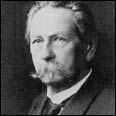 Karl Benz |
Karl Benz and his contemporaries brought the world its first commercially produced car in 1900. In 1903 the Wright Brothers became renowned for their role as the first American aviators. This however is highly doubtful as there are seven examples of human beings flying before Wilbur and Orville Wright.
The difference in my opinion, is simply that film cameras existed by 1903 and proof is in the pudding, not necessarily anywhere else.
The first vehicle to move under its own power was designed by Nicholas Joseph Cugnot and constructed by M. Brezin in 1769. A replica of this unique steam powered vehicle is displayed at the Conservatoire des Arts et Metiers, in Paris.
Cugnot's design and others like it required steel rails that had to be perfectly flat, in order to move forward at breathtaking initial speeds of 2 miles per hour. This would eventually lead to the development of the railroad train.
The first Actual Car
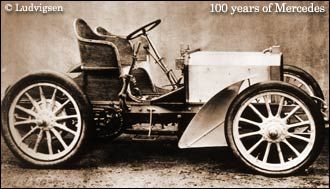 A turn-of-the-century car: a very early Mercedes Benz |
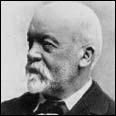 Gottllieb Daimler |
The transportation world of today first began coming together in 1885, in Gottllieb Daimler's workshop in Bad Cannstatt, Stuttgart, where he built a wooden motorcycle. Daimler's son Paul rode it from Cannstatt to Unterturkheim and back, on 10 November 1885. Daimler used what was known as a hot tube ignition system, the engine turned at 1000 revolutions per minute.
The August before, Karl Benz had drove a light, tubular framed tricycle in the Neckar valley. This was only 60 miles from Daimler, yet the two early automotive pioneers never did meet. In one interesting story, Frau Berta Benz jumped aboard Karl's vehicle one night and drove 62 miles, from Mannheim to Pforzheim, to see her mother. That was in 1888.
The development of the car happened fairly quickly after that point. By the early 1900's there were many cars being manufactured all over the world. There was no Internet, there were no simple ways to compare notes, share ideas, and besides what inventor would do that? People were extremely motivated and able to produce ideas quickly then.
 Mercédès Jellinek |

Some reading this already know that a Mercedes Benz is in reality, a Daimler-Benz AG and that Mercédès was Mercédès Jellinek; daughter of Emil Jellinek, an Austrian diplomat based in Nice who sold cars and was a noted racing enthusiast. Jellinek had been racing DMG automobiles under the pseudonym Mercédès at the turn of the 20th Century. Emil Jellinek had his Mercedes Benz delivered on 22 December 1900.
Before the internal combustion engine, manufacturers tried using things like gunpowder, believe it or not, to fire engines to life. There are still a few gunpowder carburetors out there, collectors say they are hard to find, and who wouldn't want one of those to hang on the mantle?
The First Flight

The lack of communication around the turn of the 20th Century likely is also why people were flying airplanes in the early pre-Wright years without recognition; there was no way to adequately inform people, and even if people had known, national pride like today, can lead to a roadblock on the passage of true information.
There is not just one, there are actually several somewhat credible examples of mankind flying before the Wright Brothers. A great reference for this is Who Was the First to Fly by aerospaceweb.org by Jeff Scott.
Scott lists the following seven individuals; their images are on the left but please visit the link below to his story for the full review:
- Sir Hiram Maxim, July 1894
- Clément Ader, October 1897
- Augustus Moore Herring, October 1898
- Gustave Whitehead, August 1901
- Richard Pearse, March 1903
- Preston Watson, summer 1903
- Karl Jatho, August 1903
I know, there are people who will read this and take it to be something that is 'un-American' but truth is not that, in fact it is reportedly one of the most essential principles of this nation.
In his article, Scott recognizes that mainstream historians credit the Wright brothers for being the first to conduct a sustained, controlled flight of a manned, powered aircraft, but that does not change that fact that a number of other early aviation pioneers laid claims to the same feat.
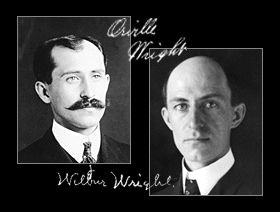 |
Scott said, "In addition to the Wrights, I've found at least seven other pioneers with credible claims to the title of first to fly, some dating back nearly a decade before the success of the Wright Flyer in December 1903. Gustave Whitehead is just one of these innovators, though his claim is probably stronger than most."
He concludes by saying that while each of the pioneers described above can make a serious claim to being the first to fly: "the ultimate determination really comes down to how you decide to measure success. It is not in question whether any of these innovators had a keen insight into aviation, for they all designed and built amazing creations that pushed the bounds of existing knowledge. Some even managed short hops into the air, but how do we decide what constitutes flight and what doesn't?"
In credit to the Wrights, Scott cites that most of these men admitted that they had not accomplished what the Wrights had.
Continental Contrast
As Americans and their European counterparts kept building cars, they went down distinctly different paths and while the roads they traveled have merged here and there, it is still almost always perfectly clear what continent a car was built on, simply by driving it.
Europe has always made the best road cars; they allow a person to be in touch with the road. American cars take up the most space and use the most fuel, likely going faster in a straight line than anything else. Japanese cars have their own feeling that is sometimes unique, sometimes a cross between the others, and often somewhat generic feeling. Of course the cars made in Japan are by far the most reliable and almost always lean toward economy, that is unless they are in a mode of trying hard to replicate some American product like the pickup truck.
Everyone is entitled to their own opinion about the driving aspects of the different car origins. There are great cars manufactured on each continent, yet there are also undeniable consistent traits. Today, hopefully, we will see a return to purity of brand, in cases like the Saab, and American cars will continue to take on the qualities of their cousins from the old world.
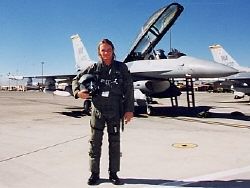
Finally, I will offer a few of my thoughts based on experience.
First and foremost, regardless of their actual terrible role in the world, particularly in Israel today, the fastest coolest hot rod ever made is the single engine F-16 Fighting Falcon. I've flown in the back seat of one of these through incredible maneuvers, even hitting 500 miles per hour, at fifty feet below sea level in California's Death Valley.
The sheer power of a jet fighter, this jet fighter, is indescribable under all conditions. Moreover, it is the force on your body when you go through the moves in something like this. I've written about it before; you can't breathe when you are in hard maneuvers in a jet fighter pushing the plane's 9 g limitation. You can, but you have to already take a breath before beginning the maneuver and you take short shallow breaths while keeping your lungs expanded. Unlike the filmTop Gun there is no singing taking place in the cockpit when a pilot is putting his plane through the moves. We pulled over 7 g's (in this event the human body weighs seven times its normal weight) and you can't lift your arm.
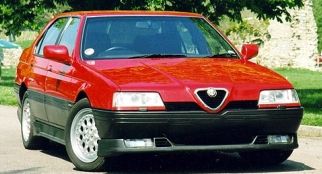
I think the car of my life that stands out the most is the bright red '91 Alfa Romeo 164 that Bonnie and I purchased when we lived in Las Vegas. A Russian/American physician had purchased it for his wife. They didn't change the timing belt at 40k miles and the engine went kaput. We bought it with 56k miles but less than 16k on the engine.
It gleamed and purred and cornered at high speed like nobody's business. The infamous Enzo Ferrari got his start in the auto racing world by driving for Alfa Romeo in the early days. People stared at the car because they had no idea what it was, with its heart shaped Alfa grill and similarity to the Saab 9000. No car I ever owned drove so well at high speed. Alfa by the way, is an acronym that stands for Anonima Lombarda Fabbrica di Automobili. I hate to say that many photos of our Alfa are not immediately accessible, so I had to borrow the image at right, but it is exactly what our car was down to the shade of red.
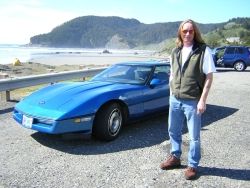
We really were big fans of our blue 1986 Chevrolet Corvette and we burned a lot of miles in that car over the two or so years we had it. One interesting aspect is the excellent gas mileage that the car gave. Corvettes are fiberglass and lighter than most steel-bodied cars. Add to that the toughest, most powerful drivetrain that Chevy offered, and you have a strong effective car for two that can be babied to easily give close to 30 miles per gallon, and never less than 21.0 mpg based on the car's built-in computer. Plus, it wasn't lightning fast, but the guy who handed us the keys told us the car's performance actually scared him, so you get the idea.
We have owned several Mercedes Benz and BMW's and all were excellent, reliable well mannered cars with ample performance, (except for our Mercedes 240D diesel, I'd call that something closer to 'adequate') and they are also safer than most cars. Of course the Volvo is the other car that is extremely safe by nature. I've owned two Volvos and had no complaints, except for when our silver 740 had the distributor disintegrate near Danville, Illinois. The Midwest was never as big on imports as the two US coasts; getting that car on the road was involved and expensive and took longer than we had hoped, but we were sure glad to get it back.
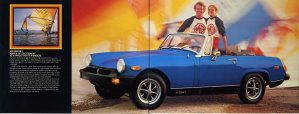 Original advertisement for the '79 MG Midget |
The most fun car I ever owned and drove regularly surely had to be my 1979 MG Midget which was 'M&M' blue with really cool new wave pattern (ahem- 'stickers') on the sides. I could never count the number of girls, generally high school girls, who complimented that car. My friends at the time told me it was because they wanted to toss me out and take it with them. It was always clear that their compliments were not indirect ones of me! But the most memorable event in the Midget happened when I was driving home from work at KVVU FOX-5 in Henderson Nevada, to my residence in Las Vegas, back in '01 or so. Traveling in the right lane, an SUV began tailgating (which happens to all MG Midget drivers) only really, super close. Not the typical road rage type, I lost it and hit my brakes and held my middle finger up, really pissed off. Then the SUV backed off and my phone rang. It was Matt Cassens, my friend from work, and the SUV was his News Jeep from the station.
I'll never forget him saying: "Hey dude, one thing, no matter what, don't ever think you look tough in that MG Midget flipping people off on the freeway!" It was a relief and funny, then, and a bit of a lesson I must admit. And if you wondered, 'MG' stands for Morris Garages.
I hope that we continue to have things like cars as time goes forward, along with other niceties like water and air. Obviously electric cars are the answer and they are getting better by the day. That represents a fusing of all cultures on this globe and the electric car of today reminiscent of what we were seeing a century ago in terms of innovation and smaller companies making cars. I think haven't gone full circle though until the cars fly.
The Future
I can't begin to tell you about all of the extremely interesting information that I come into contact with as the news editor of Salem-News.com. I recently spent time investigating a very interesting story from the mid-1980's that happened at my old Marine Corps base, El Toro in Southern California. It was about an enlisted Marine who was also a record-holding civilian glider pilot, who planned to become a Marine pilot, but was told one day that due to an embolism he suffered as a glider pilot, he would never fly for the U.S. military. His response was to take an A4 Skyhawk jet one night on an unauthorized flight. You can imagine the trouble this Marine, Lance Corporal Howard Foote was in, but it also made him more famous than he already was.
According to the Website operated by former Marine Anthony F. Milavic"While in the brig, LCpl Foote was somewhat of a cult hero among officers and enlisted alike. Many officers made comments in jest that, '... they should just let him out and pin some gold bars and wings on him... he just save(d) the Corps million of dollars in flight training...' There were book contracts and movie rights signed while he was incarcerated there at El Toro."
Why reference this? Because I learned while looking into Foote's ensuing past, that he grew to become a player in microwave flight, something that has long been known but not fully developed, that is if it can be.
The same technology that heats your dinner is used by TV stations for live shots every day. It also can be used to economically and effectively power an aircraft engine. The obvious consideration is that microwave signals will roast a human being, no doubt about it, it'll make you ready for dinner in a way you wouldn't like. So, the necessity for a massive protective shield around the aircraft's occupants is essential. But consider the possibilities.
If the base station were somehow portable, and could follow the aircraft as a mobile power base station, the line of site requirement of the microwave could conceivably be driven (flown) from coast to coast. Can you say Jetson's? As far as avoiding air collisions, perhaps vehicles would be assigned different altitudes the same way microwaves and broadcast stations are assigned different frequencies. Maybe a little out there, but it strikes me as real future possibility.
I hope anyone reading this who has a comment will leave it; tell me about your favorite car, plane, train, theories of transportation, etc., and let's keep the insult factor low as that isn't this type of story.
Special thanks to the following sources used for this article:
Who Was the First to Fly - aerospaceweb.org
Website operated by former Marine ANTHONY F MILAVIC:
 Tim King is a former U.S. Marine with twenty years of experience in broadcast and Internet news. In addition to his role as a war correspondent, this Los Angeles native serves as Salem-News.com's Executive News Editor. Tim spent the winter of 2006/07 in Afghanistan, and he was in Iraq over the summer of 2008, reporting from the war while embedded with the U.S. Army and Marines.
Tim King is a former U.S. Marine with twenty years of experience in broadcast and Internet news. In addition to his role as a war correspondent, this Los Angeles native serves as Salem-News.com's Executive News Editor. Tim spent the winter of 2006/07 in Afghanistan, and he was in Iraq over the summer of 2008, reporting from the war while embedded with the U.S. Army and Marines.
Tim holds awards for reporting, photography, writing and editing, including the Excellence in Journalism Award by the Oregon Confederation of Motorcycle Clubs (2010), Oregon AP Award for Spot News Photographer of the Year (2004), First-place Electronic Media Award in Spot News, Las Vegas, (1998), Oregon AP Cooperation Award (1991); and several others including the 2005 Red Cross Good Neighborhood Award for reporting.
Tim has several years of experience in network affiliate news TV stations, having worked as a reporter and photographer at NBC, ABC and FOX stations in Arizona, Nevada and Oregon. Tim is a member of the Orange County Press Club in Southern California. You can send Tim an email at this address: newsroom@salem-news.com
Articles for April 7, 2011 | Articles for April 8, 2011 | Articles for April 9, 2011



Quick Links
DINING
Willamette UniversityGoudy Commons Cafe
Dine on the Queen
Willamette Queen Sternwheeler
MUST SEE SALEM
Oregon Capitol ToursCapitol History Gateway
Willamette River Ride
Willamette Queen Sternwheeler
Historic Home Tours:
Deepwood Museum
The Bush House
Gaiety Hollow Garden
AUCTIONS - APPRAISALS
Auction Masters & AppraisalsCONSTRUCTION SERVICES
Roofing and ContractingSheridan, Ore.
ONLINE SHOPPING
Special Occasion DressesAdvertise with Salem-News
Contact:AdSales@Salem-News.com

Terms of Service | Privacy Policy
All comments and messages are approved by people and self promotional links or unacceptable comments are denied.
Daniel April 10, 2011 8:17 am (Pacific time)
Tim I must add the first electric vehicle was in the 1830's invented by Robert Anderson . In 1881 the land speed record was by an EV . In 1900 almost a third of all automobiles produced were EV , about a third were steam .
Colli April 10, 2011 4:31 am (Pacific time)
My favorite car was a 1976 Toyota Land Cruiser. I think I ended-up putting more off road miles on that beast than on-road miles. Terrible on gas but it would go damned near anywhere.
Editor: Those were great vehicles, the original SUV wouldn't you think?
[Return to Top]©2025 Salem-News.com. All opinions expressed in this article are those of the author and do not necessarily reflect those of Salem-News.com.